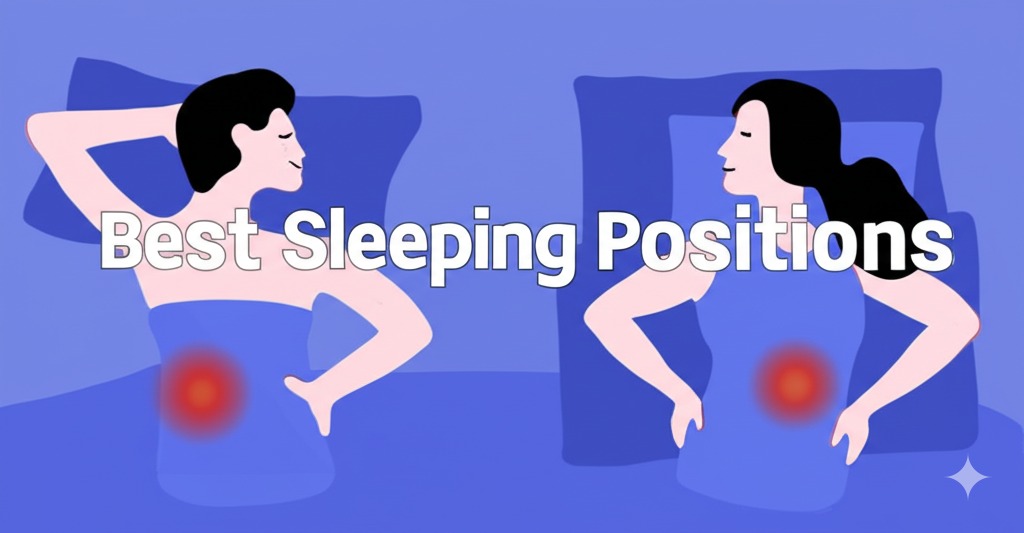If you're among the millions who suffer from back pain, the way you sleep could be making your discomfort worse—or better. Finding the right sleeping position can significantly reduce back pain and improve sleep quality, creating a positive cycle for healing and comfort.
Why Sleep Position Matters for Back Pain
Your sleeping position affects the alignment of your spine, the amount of pressure on your back muscles and joints, and the distribution of weight across your body. Poor alignment during sleep can:
- Exacerbate existing back pain
- Create new pressure points and pain
- Strain muscles and ligaments
- Disrupt healthy spinal alignment
- Interfere with restorative sleep
Conversely, optimal sleeping positions can help maintain the natural curve of your spine, reduce pressure on your back, and allow your muscles to relax and recover during sleep.
Best Sleeping Positions for Back Pain
While individual needs may vary based on the specific nature of your back pain, these positions are generally recommended by spine specialists and physical therapists:
1. Back Sleeping (Supine Position)
Benefits:
- Distributes weight evenly across your body
- Minimizes pressure points
- Maintains natural spinal alignment
- Particularly good for lower back pain
Optimization Tips:
- Place a small pillow under your knees to reduce pressure on your lower back
- Use a supportive pillow that keeps your head and neck aligned with your spine
- Consider a medium-firm mattress that supports your natural spinal curve
2. Side Sleeping with Proper Support
Benefits:
- Can reduce pressure on the spine
- Good for those with sleep apnea or snoring issues
- Can help with acid reflux
- Beneficial for those with herniated discs or spinal stenosis
Optimization Tips:
- Place a firm pillow between your knees to maintain hip and spine alignment
- Use a pillow that keeps your head aligned with your spine (not too high or low)
- Consider a partial side position with slight bend at knees and hips
- Avoid the fetal position, which can strain your back and neck
3. Reclined Position
Benefits:
- Creates an angle between your thighs and torso that reduces pressure on the spine
- Particularly helpful for isthmic spondylolisthesis
- Can help with degenerative disc disease
- Provides support while maintaining natural spinal curves
Optimization Tips:
- Use an adjustable bed if possible
- Alternatively, use a wedge pillow or multiple pillows to create the reclined position
- Ensure your head and neck are supported
- Consider a specialized pillow designed for this position
Sleeping Positions to Avoid
Some sleeping positions can exacerbate back pain and should generally be avoided:
| Position | Why It's Problematic |
|---|---|
| Stomach sleeping | Forces your neck to rotate and can flatten the natural curve of your spine, putting pressure on joints and muscles |
| Unsupported side sleeping | Without proper pillow support, can cause your spine to curve and create pressure points at the hips and shoulders |
| Twisted or contorted positions | Can strain muscles and ligaments and put uneven pressure on your spine |
Beyond Position: Other Factors That Matter
While sleeping position is crucial, other factors also play important roles in managing back pain during sleep:
Mattress Selection
A medium-firm mattress typically provides the best support for back pain. Too soft, and your body sinks, creating misalignment; too firm, and pressure points develop.
Pillow Choice
Your pillow should support the natural curve of your neck and be the right height for your sleeping position. Specialized orthopedic pillows can help maintain alignment.
Sleep Environment
Ensure your bedroom promotes quality sleep with appropriate temperature, minimal noise, and darkness to maximize your body's healing processes.
Pre-Sleep Routine
Gentle stretching before bed can relax tense back muscles. Consider incorporating back-friendly yoga poses or specific stretches recommended by physical therapists.
Transitioning to a New Sleep Position
Changing your sleep position isn't always easy—we tend to default to habitual positions during sleep. Here are some strategies to help you successfully transition:
- Use pillows as "barriers" to prevent rolling into unwanted positions
- Start by practicing your new position during short naps
- Be patient—it may take several weeks to adapt to a new sleeping position
- Consider using a body pillow for additional support and to help maintain position
- If you wake up in your old position, simply readjust and continue trying
When to Consult a Professional
If your back pain persists despite trying different sleeping positions and making environmental adjustments, it's important to consult with a healthcare provider. Chronic back pain can be a symptom of underlying conditions that may require specific treatment. A physical therapist, chiropractor, or spine specialist can provide personalized recommendations based on your specific condition.
Finding the right sleeping position is a personal journey that depends on your specific back condition, body type, and comfort preferences. By experimenting with these recommended positions and optimizing your sleep environment, you can significantly reduce back pain and improve your sleep quality, creating a positive cycle for healing and overall well-being.




